HOW ROANOKE CAME TO BE — PART THREE
How Roanoke Came To Be, Part Three:
Roanoke Academy comes to life!
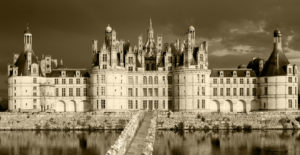
When we last left off, we were wondering what the island and the school would be like?
For that I turned to the Internet and pictures.

The staircase in the ruined castle on Bannerman’s Island…through this arch lies the path to Roanoke!
I spent a week just Googling pictures. (This was back when Google Image was still worth using). I looked up photos of everything I thought was beautiful to the eye: Forests, old buildings, gardens, statues. I picked all the pictures I really liked and began organizing them into a virtual tour….what you might see if you visited the school now called Roanoke Academy for the Sorcerous Arts. I picked the images and buildings I loved the most.
This was a really enjoyable way to make up a place!
(That virtual tour has been made into a video, which can be seen in the Roanoke Academy Facebook Group. I cannot post it publicly, as I don’t own the photos. I’ve pinned it at the top, though, for anyone who is a member of–or joins–the group. ) From there, I drew a map.
Now I had a campus, with places to represent different events that I knew would take place in the series—such as where the Elf lived, etc. Because the island had sailed all over the world in the past, I peopled it with fey from many different places around the world: some domestic, some wild.
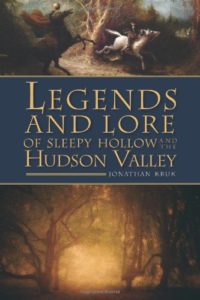 I also added the Heer of Dunderberg, and other supernatural elements that were native to the Hudson Highlands, to help the story settle into its new home. Some came from the Dutch settlers who lived in this area. Others from the Lenni Lenape who lived there before them.
I also added the Heer of Dunderberg, and other supernatural elements that were native to the Hudson Highlands, to help the story settle into its new home. Some came from the Dutch settlers who lived in this area. Others from the Lenni Lenape who lived there before them.
As I researched this, I discovered that a gentleman I knew in my childhood is the storyteller who recites The Legend of Sleepy Hallow each Halloween at the church in Sleepy Hollow, NY where the climax of the story takes place. He has written a wonderful book about the lore of the Hudson Valley and the supernatural elements mentioned in Washington Irving’s story called The Legend and Lore of Sleep Hollow and the Hudson Valley by Jonathan Kruk. I drew heavily on this when populating the local fey, especially for the Halloween adventure.
Now I had a school. I needed to know how it was run and what they taught there. More specifically, I needed a magic system.
I started by making a list of specific spells we had used in the game that were important for the plot. Then I began thinking about how I could get the same effect a different way. Then, I threw my hands into the air and decided to steal it all.
Where did I steal it from? The same game John had run young Mark Whipple in, back in the 80s. I figured: Why invent something new, if I can use off the shelf, game-tested technology…magic-ology?
For instance, the Original Language that cantrips are spoken in? That was the magical language from John’s long running game. My character in that game had been pretty good at it. I could even say a few very simple things in that tongue. So I kiped it and put it into Roanoke as a school of magic.
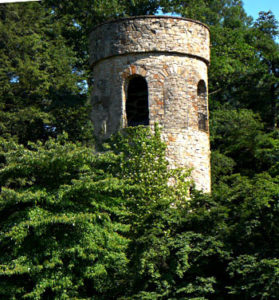
The Watch Tower (where the second book opens)
(I had a review once say that they didn’t think the magical words actually came from a language, which made me smile, because I knew exactly what each phrase I’ve used means.)
Hammering the whole magic system out—particularly the powers not represented at Roanoke—took a bit of time, but eventually it all fell into place. I had a great deal of fun going through Genesis and trying to find lines that could represent various powers that, in this story, were granted to Adam and, through him, to his sons, as I worked out which powers were licit to human beings and which ones were actually infernal.
Then I needed an actual school. What was the culture like at Roanoke? How were classes taught?
I had often commented on what it must have been like in Harry Potter’s world where no one took English or math after ten years old. So, I wanted a school where students actually had to study scholastic subjects. It took some work to find a way to tie the different magics into the subjects a student might study—and I only kind of succeeded with math—but I was quite pleased at how it came out.
But the question remained: what should the school be like.
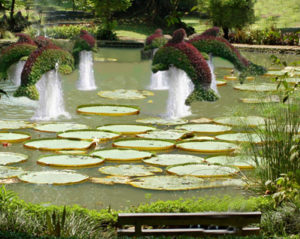
The Lily Pond with its dolphin topiaries and fountains
First, I wanted the student body to be international. I did this for two reasons: First, the Island had traveled all around the world. So I figured people would have gotten on at many different places. In fact, though it has hardly come up in the books, the seven schools of magic come from different parts of the world, (which is why Roanoke Academy is the only place on the planet that teaches all seven schools of magic.)
Second, I felt that the place seemed more significant if top sorcerers came here from all over the globe. So many stories are kind of insular. They only seem concerned with the local area. Since the events of the story would, at times, threaten the whole world, it seemed nice if the whole world was
Next, I needed to decide what the culture of the school was like, customs, classes, etc. At the time, I was under the false impression that J. K. Rowling had invented the House system she used. Turns out, no. That is what British boarding schools are like. But I still felt if I copied it exactly, it would feel too much like Harry Potter.
But I needed at least a touch of group rivalry to reproduce the plot points that came from Rachel’s friends and family all being in Gryffindor while her boyfriend was from Slytherin.
On the other hand, there were quite a few novels of schools with magic—or at least vampires—set in American style boarding schools. Many of them had a Gothic feel–where the school is spooky and the students feel trapped rather than safe. I didn’t want that either.
How, I wondered, could I do something like what Rowling did…pick a school design that existed but was different, so the place seemed organic in the way of a real thing, even if the readers did not know why.
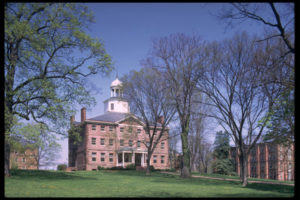
St. John’s College — founded by two students from Dee Hall
The solution, I realized was the college that John and I and our fellow player and Mark had all attended: St. John’s college in Annapolis, MD.
St. John’s is quite different from other scholastic institutions. Rather than rows of tables, it has a single table in the center of each classroom. It has an intramural sports program—where freshmen are assigned to teams and alumni can return and play with their team whenever they like. It has core groups that go to all their classes together, and the instructors are called tutors rather than teachers or professors (also true of some British schools.)
It has Don Rags—a tradition borrowed from Oxford or Cambridge—where the tutors talk about the student in the third person, while the student is forced to sit and listen. It has a Freshman Choir of which all freshmen are automatically members. (Roanoke has a Sophomore Choir, which will come onstage Rachel’s sophomore year.)
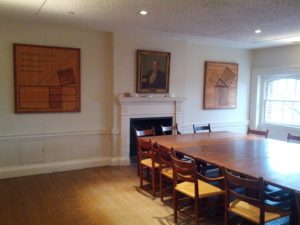
A St. John’s classroom. Or is that Roanoke?
An amusing aside: at least four of these things, when they appeared in the book, were questioned by my editor, who thought them unrealistic.
St. John’s also approaches material from the original sources and examines it in order. This is less the case at Roanoke, but a few of the paragraphs about Rachel’s classes have mentioned approaches that were at least inspired by St. John’s.
I thought the quaint traditions of St. John’s mixed wonderfully with magical life. Out of gratitude I give 5% of the profits from the series to the college. (10% of my half of the money. The other half goes to Mark Whipple.)
And, so, you have it. Several friends obliged me by letting me run them playing characters in the new game based on the new location, and Roanoke became its own place—with its own culture, customs, and staff.
I say all this lightly, but it took a tremendous amount of work. Sometimes it was frustrating, but usually, it was really joy-filled as I strove to invent a campus that would be a delightful place to be…and read about.
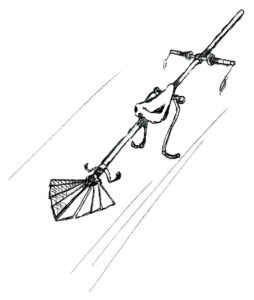
Vroomie!
Then came the world. I decided that any element I was going to keep from the original background–such as brooms–had to be re-thought. So I sat down and spend a great deal of time thinking out what the world might be like, who could use magic, how much it affected everyday life, travel, clothing, etc. In Mark’s background, there was a company (originally stolen from FRINGE) that mixed science and magic. How would this affect what they could do?
From this line of thinking came the bristleness broom and, one of my favorite inventions of all from the series, the steeplechaser. Game Rachel did not have anything half so cool as Vroomie.
By the time I was done with all this, the background and the game has very little in common with its Harry Potter roots, except for the general setting and some mood. I like to explain that it is not fan fiction–a story set in the same setting–so much as it as a different story in a similar background: similar to how Gone with the Wind, Gettysburg, and Red Badge of Courage all take place in the Civil War. Same setting, very different stories.
This becomes even more true as the series continues–as the plot and story motion begins to resemble Harry Potter less and less. And yet, anyone who enjoys the magic of Rowling’s work may continue to enjoy Rachel Griffin’s story as well.
All this is only the beginning—you can imagine the horror I felt when I realized I needed to invent new worlds for every character who came from somewhere else. I nearly stopped writing the series. But, it hasn’t been so bad. It gives me great fodder for short stories.
And that, my friends, is how Roanoke Academy for the Sorcerous Arts came to be.

Outstanding. Love this series, it’s wonderful.
Fascinating – and inspiring – account.
My family is just embarking on our very first D&D game (two sessions so far) with my son Billy as DM (he has been involved in this in a club at schoool for about three years).
Bruce
Very cool. What is everyone playing? (I’m the elf cleric in our game.)
This is a great series and my son loved it. Thank you for the books and the magic.
Thank you!
That is very kind!